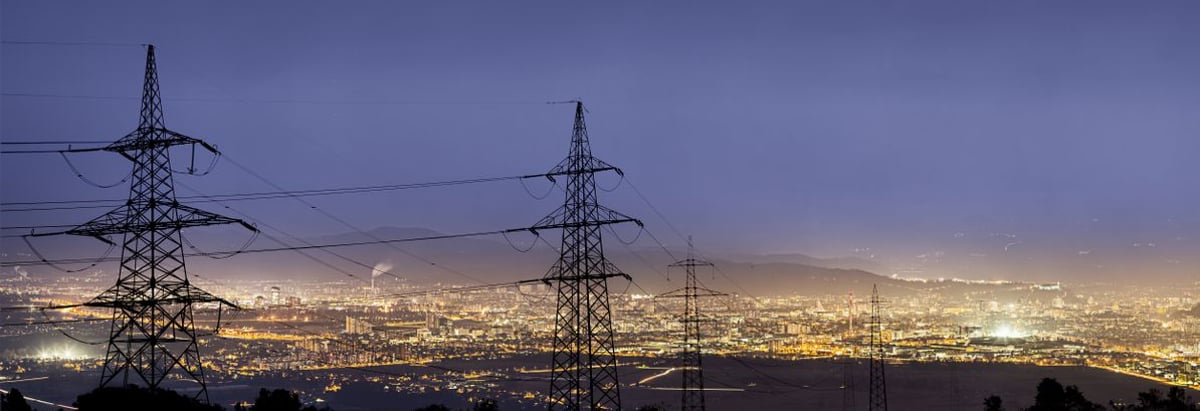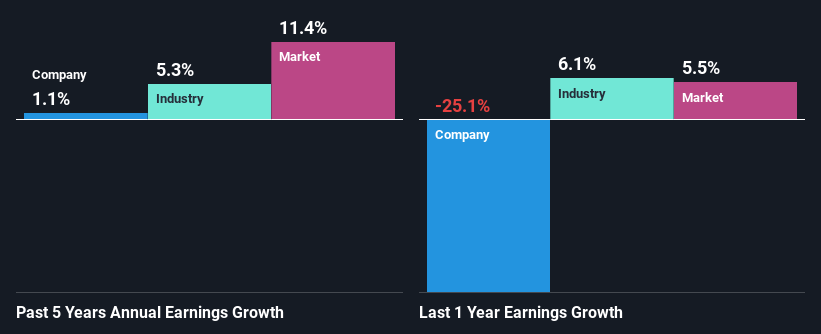- South Korea
- /
- Electric Utilities
- /
- KOSE:A130660
Does The Market Have A Low Tolerance For Korea Electric Power Industrial Development Co., Ltd's (KRX:130660) Mixed Fundamentals?

With its stock down 20% over the past month, it is easy to disregard Korea Electric Power Industrial Development (KRX:130660). It seems that the market might have completely ignored the positive aspects of the company's fundamentals and decided to weigh-in more on the negative aspects. Fundamentals usually dictate market outcomes so it makes sense to study the company's financials. In this article, we decided to focus on Korea Electric Power Industrial Development's ROE.
Return on equity or ROE is a key measure used to assess how efficiently a company's management is utilizing the company's capital. In short, ROE shows the profit each dollar generates with respect to its shareholder investments.
How Is ROE Calculated?
The formula for ROE is:
Return on Equity = Net Profit (from continuing operations) ÷ Shareholders' Equity
So, based on the above formula, the ROE for Korea Electric Power Industrial Development is:
10% = ₩12b ÷ ₩116b (Based on the trailing twelve months to December 2024).
The 'return' is the income the business earned over the last year. One way to conceptualize this is that for each ₩1 of shareholders' capital it has, the company made ₩0.10 in profit.
Check out our latest analysis for Korea Electric Power Industrial Development
Why Is ROE Important For Earnings Growth?
So far, we've learned that ROE is a measure of a company's profitability. Based on how much of its profits the company chooses to reinvest or "retain", we are then able to evaluate a company's future ability to generate profits. Generally speaking, other things being equal, firms with a high return on equity and profit retention, have a higher growth rate than firms that don’t share these attributes.
A Side By Side comparison of Korea Electric Power Industrial Development's Earnings Growth And 10% ROE
When you first look at it, Korea Electric Power Industrial Development's ROE doesn't look that attractive. Yet, a closer study shows that the company's ROE is similar to the industry average of 8.4%. However, Korea Electric Power Industrial Development has seen a flattish net income growth over the past five years, which is not saying much. Bear in mind, the company's ROE is not very high. Hence, this provides some context to the flat earnings growth seen by the company.
As a next step, we compared Korea Electric Power Industrial Development's net income growth with the industry and were disappointed to see that the company's growth is lower than the industry average growth of 5.3% in the same period.

Earnings growth is a huge factor in stock valuation. It’s important for an investor to know whether the market has priced in the company's expected earnings growth (or decline). By doing so, they will have an idea if the stock is headed into clear blue waters or if swampy waters await. If you're wondering about Korea Electric Power Industrial Development's's valuation, check out this gauge of its price-to-earnings ratio , as compared to its industry.
Is Korea Electric Power Industrial Development Efficiently Re-investing Its Profits?
Despite having a moderate three-year median payout ratio of 50% (meaning the company retains50% of profits) in the last three-year period, Korea Electric Power Industrial Development's earnings growth was more or les flat. So there could be some other explanation in that regard. For instance, the company's business may be deteriorating.
Moreover, Korea Electric Power Industrial Development has been paying dividends for six years, which is a considerable amount of time, suggesting that management must have perceived that the shareholders prefer dividends over earnings growth.
Conclusion
In total, we're a bit ambivalent about Korea Electric Power Industrial Development's performance. While the company does have a high rate of reinvestment, the low ROE means that all that reinvestment is not reaping any benefit to its investors, and moreover, its having a negative impact on the earnings growth. So far, we've only made a quick discussion around the company's earnings growth. To gain further insights into Korea Electric Power Industrial Development's past profit growth, check out this visualization of past earnings, revenue and cash flows.
Valuation is complex, but we're here to simplify it.
Discover if Korea Electric Power Industrial Development might be undervalued or overvalued with our detailed analysis, featuring fair value estimates, potential risks, dividends, insider trades, and its financial condition.
Access Free AnalysisHave feedback on this article? Concerned about the content? Get in touch with us directly. Alternatively, email editorial-team (at) simplywallst.com.
This article by Simply Wall St is general in nature. We provide commentary based on historical data and analyst forecasts only using an unbiased methodology and our articles are not intended to be financial advice. It does not constitute a recommendation to buy or sell any stock, and does not take account of your objectives, or your financial situation. We aim to bring you long-term focused analysis driven by fundamental data. Note that our analysis may not factor in the latest price-sensitive company announcements or qualitative material. Simply Wall St has no position in any stocks mentioned.
About KOSE:A130660
Korea Electric Power Industrial Development
Korea Electric Power Industrial Development Co., Ltd.
Flawless balance sheet second-rate dividend payer.
Market Insights
Community Narratives



